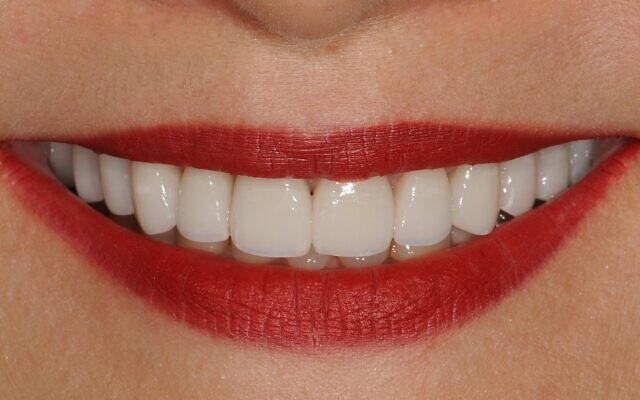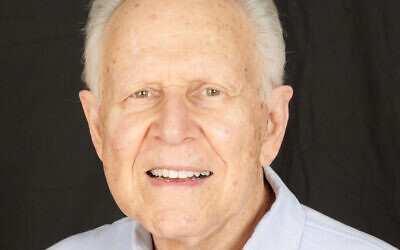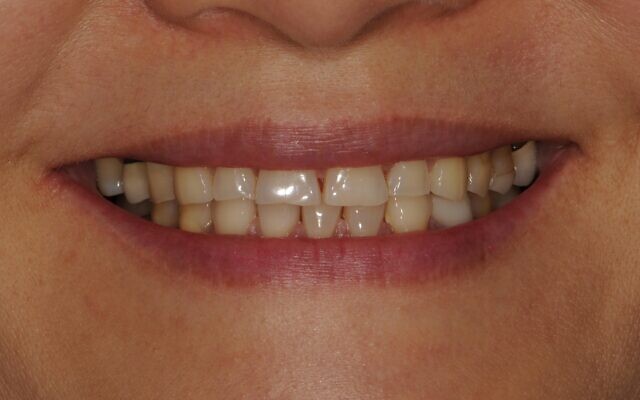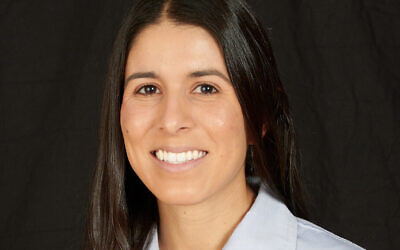Day Grinding or Clenching: Are You Guilty?
Two Atlanta dentists discuss ‘awake bruxism’ with suggested treatment options.

Few times in our history have we seen so many people under so much stress. In fact, three out of four Americans report experiencing at least one stress symptom in the last month, according to the American Psychological Association. Dr. Goldstein estimates that 80 percent of people clench or grind their teeth at some point during their lifetime.
The COVID-19 pandemic resulted in extensive time in quarantine, plus lost jobs, lost income and businesses loss. Not to mention the volatile election year and overall rapid shift to a new normal. We are seeing more symptoms such as constant headaches, neck and other body strains, losing patience, road rage, tempers and general unhappiness with one’s life, plus problems causing stress among friends and family.

But some of the problems of stress can also result in teeth clenching or grinding called bruxism. These are a relatively common habit but can affect the need for dental treatment. Restoration failure, such as material chipping and fractures, is an unfortunate and costly occurrence that can happen as a result. Changes around your teeth such as widening of the ligaments that help your teeth stay in place, tooth mobility and recession may also occur.
A strong correlation exists between temporomandibular disorders and bruxism. Whether bruxism causes TMDs is undetermined, but there is support to show that day bruxism exacerbates TMD symptoms, including headache, muscle and joint pain, plus jaw locking. The activity of bruxism results in muscle hyperactivity, particularly the jaw muscles, many times causing muscle spasm as well as temporal headaches.
Compounding the problem, there is a lack of awareness specific to awake tooth clenching and grinding. If you are aware of the problem, chances are you have visited your dentist and even have had treatment to help you stop, or at least control what has become a harmful habit. Many patients have visited numerous physicians to help solve their headaches but are still seeking a cure.
This article is about unconscious day grinding or awake bruxism and the affect this has on the overall problem. Most people do this at some time or another, but are totally unaware they are doing it, nor the damage as we have pointed out, not only in their teeth but also in the temporomandibular joint and associated surrounding muscles.
While they both stem from the same medical condition called bruxism, grinding and clenching are different. Clenching can occur during sleep or while you’re awake, and can transpire during physical or athletic activities or periods of stress where your teeth are pressed hard together but don’t move from side to slide. Grinding tends to happen subconsciously during sleep, although it can and does happen, too often, during the day. In a 2017 article by Drs. Goldstein and Wendy Clark on “The Clinical Management of Awake Bruxism,” published in The Journal of the American Dental Association, the authors acknowledge statistics vary considerably about the prevalence of bruxism. However, Goldstein estimates that more than 80 percent of people grind or clench at some time during the day and are completely unaware of it. So if you are still getting headaches, we suggest you have your dentist examine your internal facial muscles, plus possible tooth wear.

In addition to taking a complete history of the various symptoms, an exam of the facial muscles is necessary to locate patterns of tooth wear and the cause. There was a famous Bob Newhart video in which he plays a psychiatrist and after listening to the many habits the patient has, his treatment plan consisted of three words: “Just Stop It!” That treatment would be great if it could work with clenching and grinding, but it takes much more to help cure, or at least control the habit of “awake bruxism.”
To begin with, a cephalometric X-ray may be required to show a side view of the face, which allows the dentist to see the temporomandibular joint and surrounding structures. Patients may require a day or night guard to help control the problem. However, other problems such as sleep apnea may need diagnosing. Sleep apnea is when breathing repeatedly stops and starts and often is associated with loud snoring, gasping or choking and when abruptly awoken and awakening with a dry mouth or sore throat. It can also be related to clenching or grinding teeth.

In addition, we recommend lifestyle changes. A concrete plan of patient education is a first step to solving the problem of awake bruxism. Once aware of the bruxism events, you can begin to make the necessary change in behavior.
If behavior change is not successful, we recommend a daytime appliance, not only to prevent damage but also to promote awareness. A person tends to be more aware of clenching or grinding when he or she bites on an appliance rather than the opposing teeth.
When possible, it is always best to prevent the need for extensive dental treatment due to advanced tooth wear. Inhibiting bruxism, both awake and sleeping, is in the patient’s best interest. Thus, it is imperative for the dentist, hygienist and dental assistant to educate and reeducate the patient during and after any restorative treatment. This also should include a possible need for a night guard to protect any new porcelain veneers or crowns.
Ronald Goldstein is an Atlanta cosmetic dentist. Toni Salama is a dental specialist in periodontics and implant dentistry. Both are with Goldstein Garber & Salama, GoldsteinGarber.com.



comments